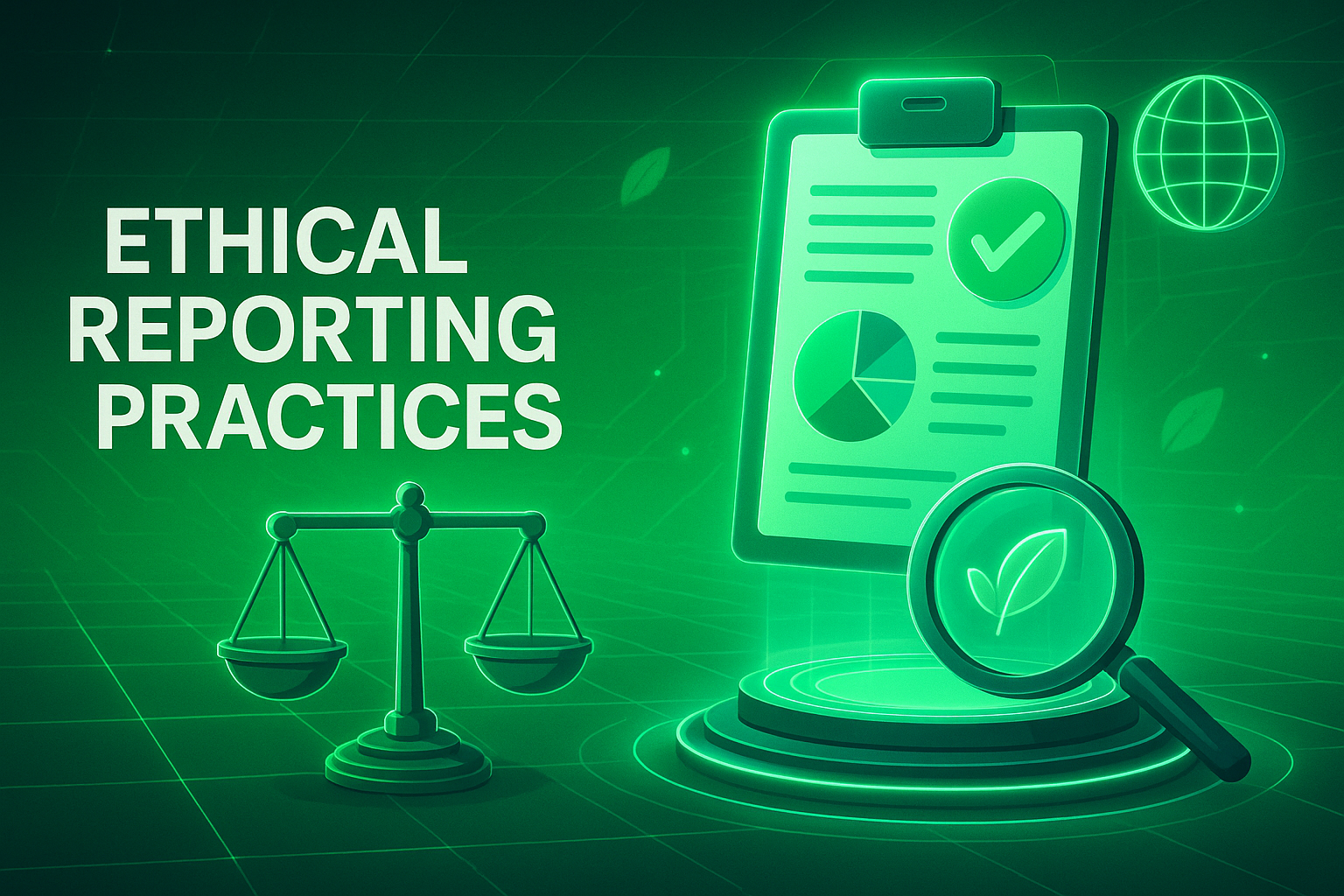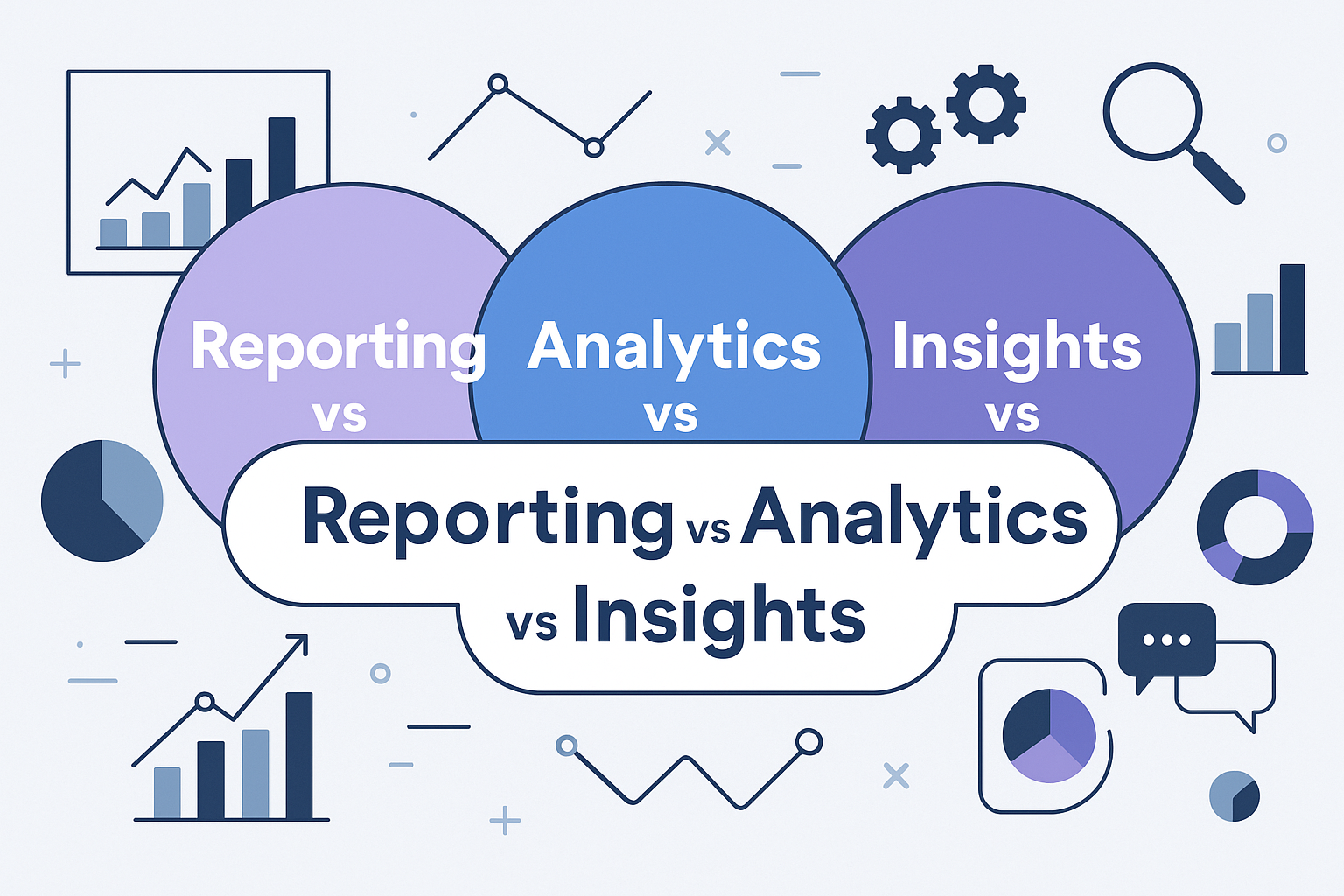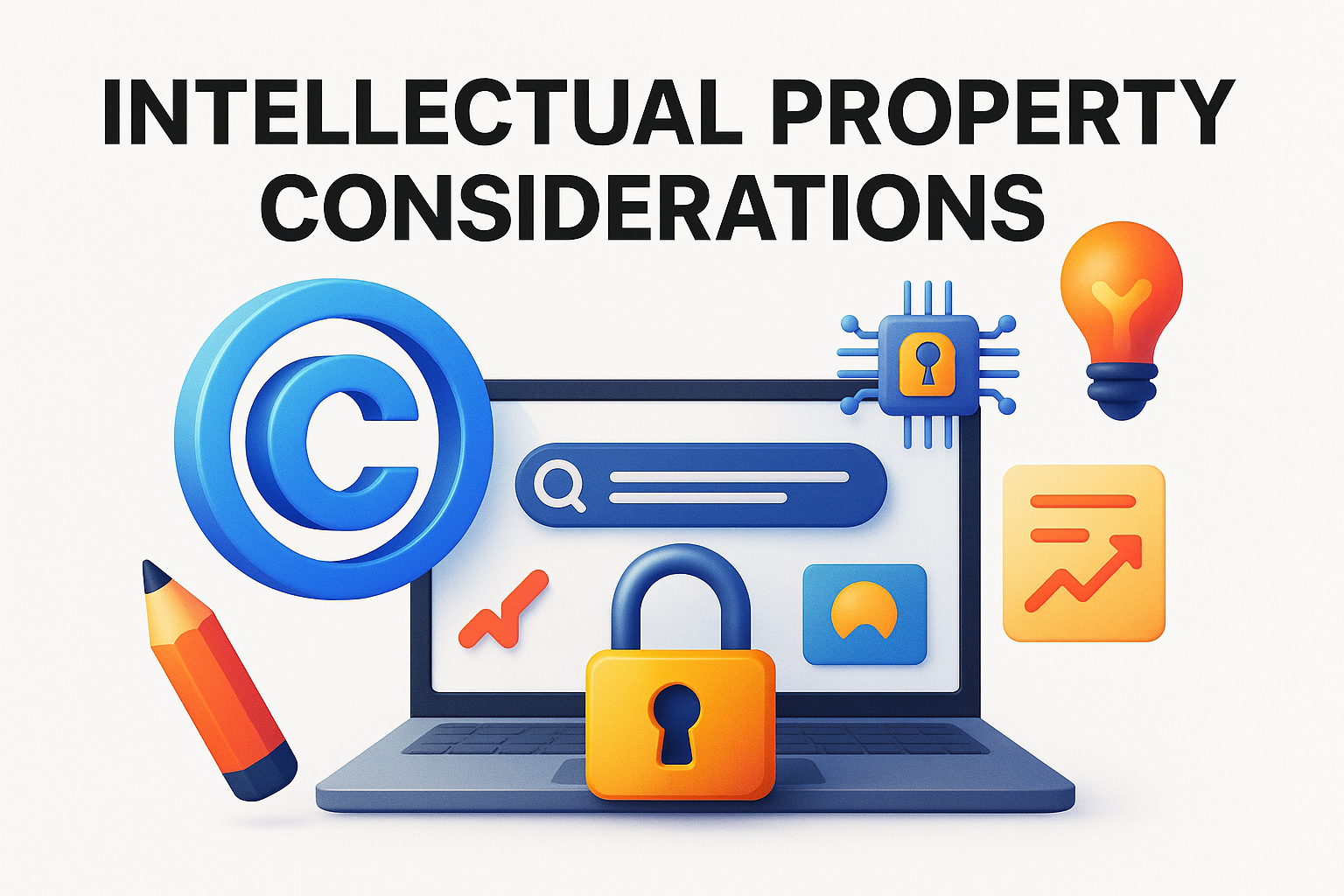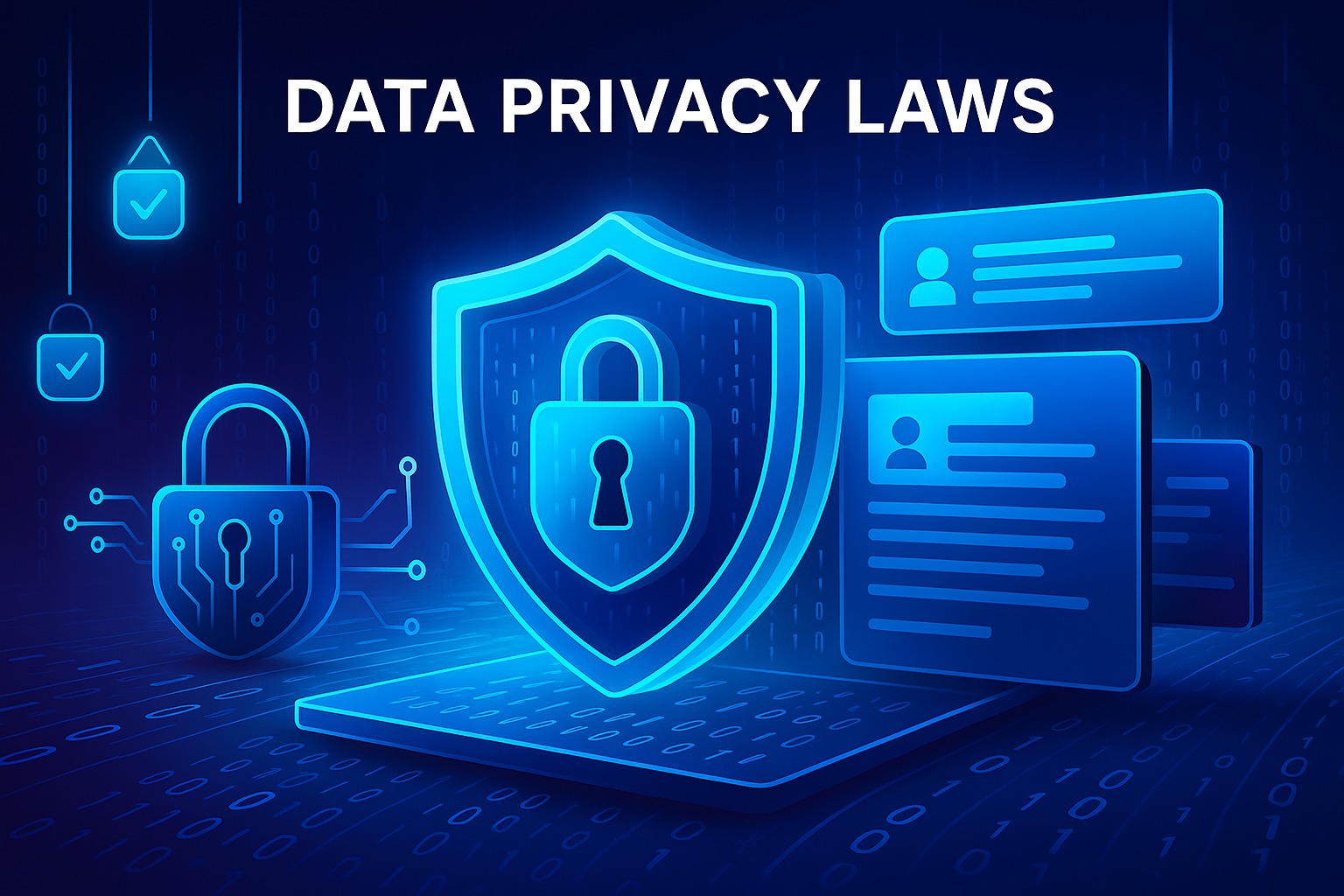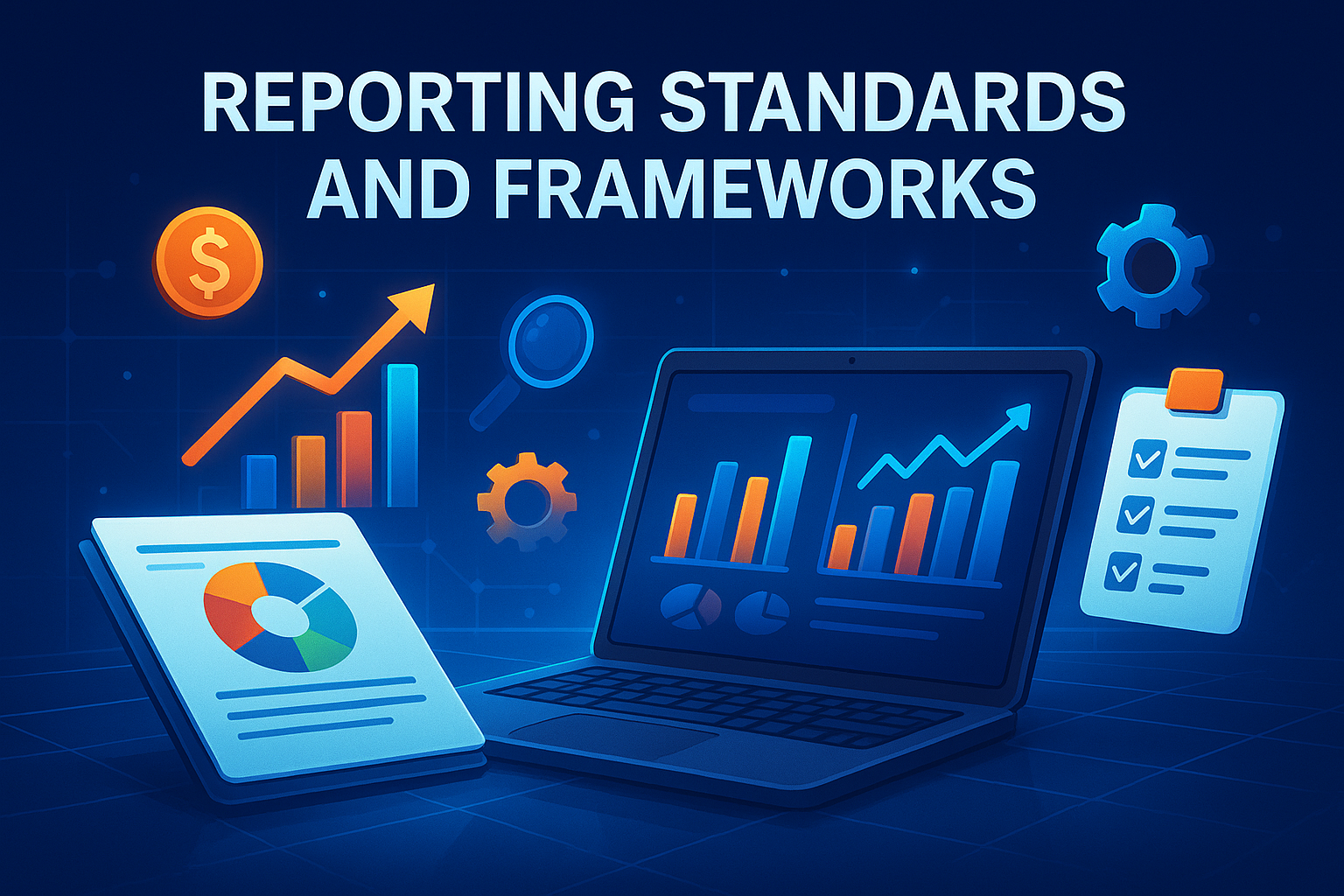Ethical Use of Data in Reports
Key Takeaways
-
Report ethically — build trust with stakeholders and the public through honesty, accuracy, transparency, and respect for privacy.
-
Businesses need to establish guidelines, perform audits, and cultivate an environment of integrity when it comes to reporting.
-
Ethical reporting means diligent fact-checking, transparent sourcing, and providing a variety of perspectives to reduce bias.
-
Ensuring personal data is secure, source protection, and privacy requirements are met are musts for ethical data handling.
-
Stakeholder engagement and respect for people affected by data decisions uphold public trust and ethical reporting.
-
Unethical reporting exposes media organizations to legal risks, damages their reputation, and causes them to lose public confidence. As a result, ethical reporting is paramount for long-term success.
Ethical reporting means presenting information truthfully, transparently, and impartially. These practices enable teams to rely on the data, reduce bias, and make informed decisions.
In areas such as marketing, news, and business, outlined actions safeguard users and preserve quality. Great reporting minimizes errors and ensures compliance.
For communities and organizations, ethical reporting fosters trust and demonstrates genuine concern for members. The sections ahead break down the key practices that make this possible. so stay for a while.
What are Ethical Reporting Practices?

Ethical reporting practices mean integrity, transparency, and thoroughness in reporting information. They’re not just for journalism, but for anyone who reports something that has an impact on a person or organization. Ethics statements assist in decision-making and establish transparent standards for reporting.
They ensure everyone on a team or in a group understands what’s ethical and what’s anticipated. Adhering to these principles establishes trust among clients, stakeholders, and the public, cultivating long-term trustworthiness. The key is simple: act with integrity and take responsibility for every detail, from the smallest fact to the big picture.
1. Accuracy
Being accurate lies at the core of ethical reporting. All numbers, quotes, or claims need to be researched and verified before sharing. Teams must fact-check, rely on reputable sources, and be vigilant for errors.
Example: A public company releases its quarterly earnings. If the finance team misreports revenue growth (say, $10M instead of $1M due to a misplaced zero), it can mislead investors and cause legal issues. Ethical reporting means double-checking every figure before publication and issuing a correction immediately if mistakes are found.
2. Transparency
Transparency is disclosing information about the sources and methods of your reporting. Never hide behind a source and never report data without telling the reader how it was collected or processed.
Example: A consulting firm publishes a market research report showing that “70% of businesses plan to increase digital ad spending.” Ethical reporting requires disclosing the sample size, the industries surveyed, and the methodology. Without this, readers could wrongly assume it applies to the entire market. Transparency builds credibility with clients and stakeholders.
3. Fairness
Fairness is exposing all sides of a story. No one perspective should overwhelm others; hence, all reports must balance varying perspectives with appropriate prominence.
Example: An organization prepares an internal diversity report. If it only highlights improvements (like a rise in women in leadership roles) but omits areas where representation worsened (like fewer hires from underrepresented groups), the report paints an unbalanced picture. Ethical reporting means showing both progress and challenges, giving stakeholders a full, fair understanding.
4. Accountability
Accountability indicates that everyone in reporting takes responsibility for their work and behavior. Define clear procedures for who reviews and authorizes reports.
Example: A nonprofit org publishes its annual impact report with overstated numbers of people helped. When questioned, the team blames an external partner for the error. Ethical reporting requires owning the mistake, publishing a corrected version, and explaining the process changes being put in place to avoid future errors. This shows responsibility instead of deflection.
5. Privacy
Privacy cannot be an afterthought. Guard identity and confidential data throughout. Seek permission before you use someone’s data in a report.
Example: An HR department compiles an employee satisfaction report. Including direct quotes linked to individual names without consent could breach trust and expose employees to backlash. Ethical reporting means anonymizing responses, securing raw data, and presenting only aggregated insights that protect employee privacy.
The Data Lifecycle Ethic
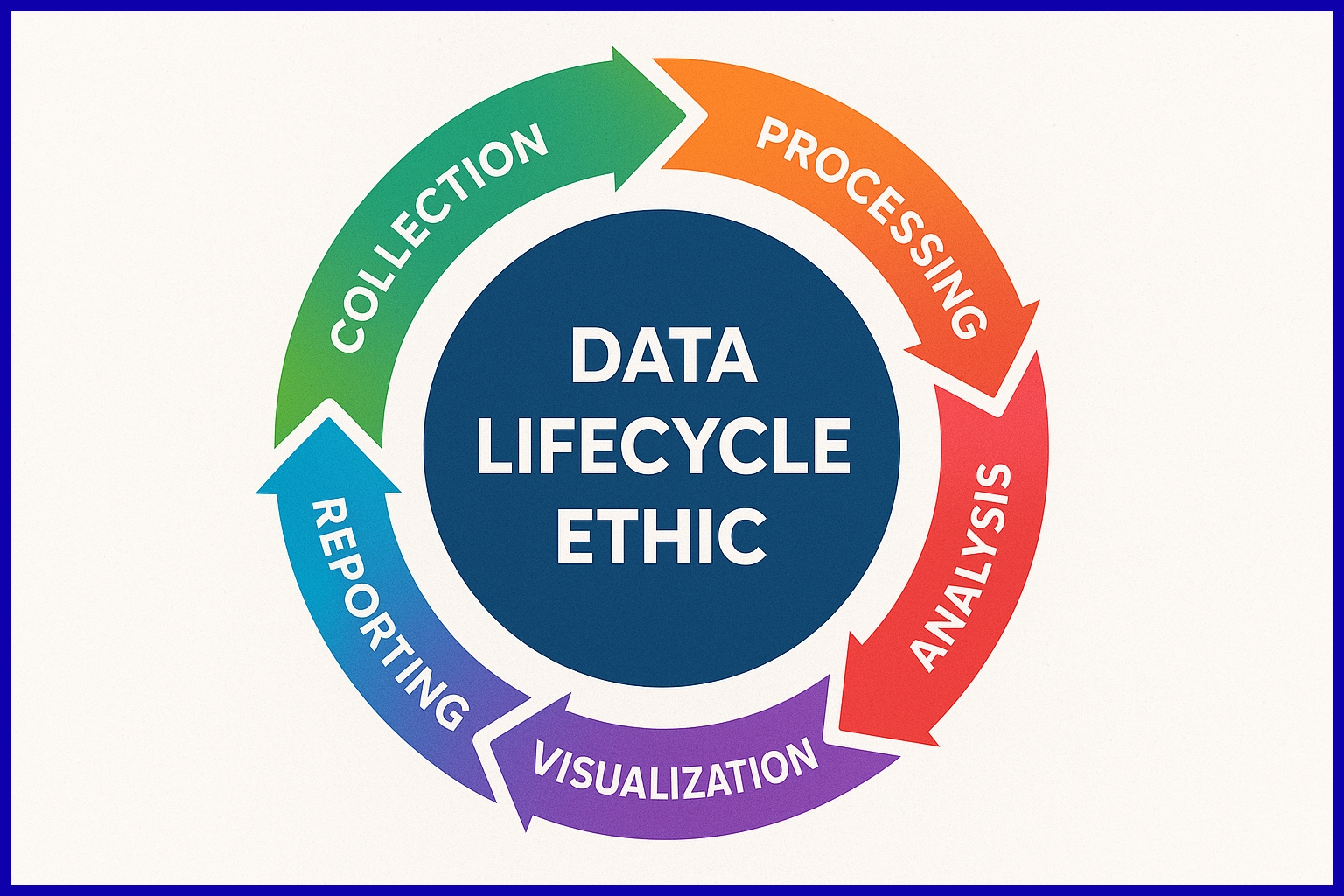
The data lifecycle ethic means thinking about ethics everywhere along the data lifecycle — from collection to destruction. It’s not just about being lawful; it’s about being trustworthy, respecting users, and respecting privacy. Policies have to be explicit and lead teams through every step.
Stakeholders deserve a voice in conversations about risks, fairness, and rights. Check and recheck policies because laws like GDPR are always evolving. The idea is to maintain user privacy and transparency all the way until the data is gone.
Collection
Ethical reporting starts with collecting data the right way.
-
Be transparent about what you’re collecting and why
-
Use informed consent forms that explain usage and deletion
-
Treat privacy as respect for people, not just compliance
When people know their data is handled with honesty, trust is built from the very first step.
Processing
Once collected, data must be processed with care and accountability.
-
Keep processing secure and bias-free
-
Document every step so it can be reviewed or audited
-
Regularly check against policies and external rules like GDPR
Clear, secure processing shows stakeholders that the organization values integrity as much as results.
Analysis
Robust analysis implies applying best practices and exploring results for bias. Cherry-picking data to demonstrate your point breaks trust and can have unjust results. Discoveries should be transparent about any vulnerabilities or potential inaccuracies.
Publishing analysis steps and opening analysis to the feedback of other analysts can make the work stronger and more balanced. This encourages equity and aids in preventing outcomes that damage or marginalize a population.
Visualization
Data should be easy to understand without being misleading.
-
Design visuals with clarity and accessibility in mind
-
Use plain labels, high contrast, and alt text for inclusivity
-
Add context so charts tell the full story
-
Leverage tools like KPI.me for transparent dashboards that turn numbers into clear insights
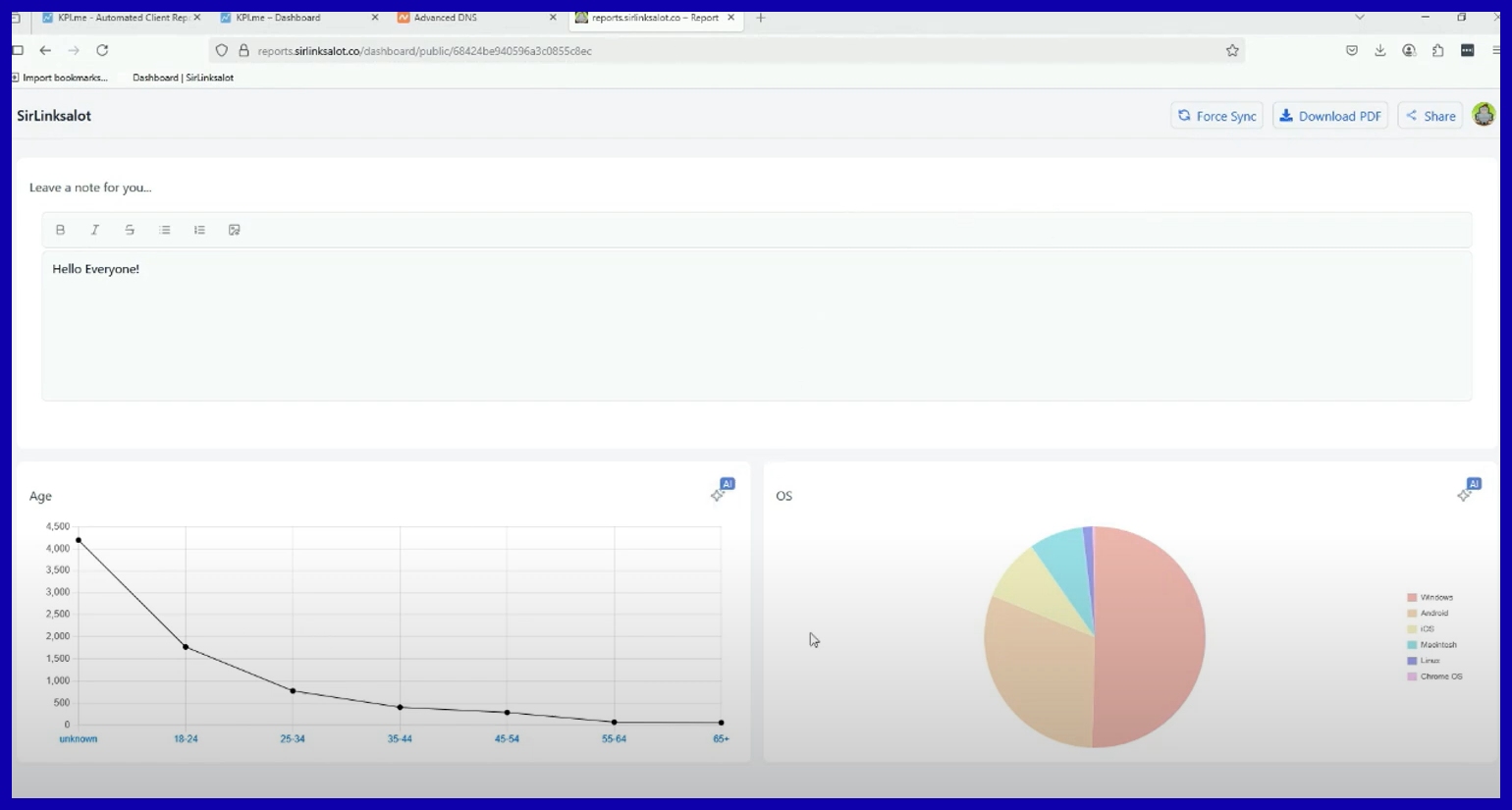
Strong visuals don’t just present data—they make it trustworthy and actionable.
Reporting
Reporting is where all the hard work comes together and gets shared with others—it’s the moment to be clear, honest, and complete.
-
Define the purpose and scope so readers know why the report matters
-
Explain the methods used to build credibility
-
Highlight key findings without exaggeration
-
Include limitations and disclaimers for transparency
-
Offer recommendations backed by evidence
-
Emphasize data privacy and security practices throughout
When written in plain language and presented in multiple formats, text, charts, or even video reports become more accessible, engaging, and valuable to a wider audience.
Navigating Bias in Data
Bias can creep into data at any stage—even when processes look objective on the surface. Choices such as what to collect, how to measure it, and which models to use all influence the outcome. Without careful evaluation, these decisions can quietly distort results and weaken trust.
Not every model is equally reliable, and assuming they are can warp insights. The risk grows even higher when working with secondary data, where hidden flaws make results harder to replicate or defend. That’s why ethical reporting requires tools and practices that keep bias in check.
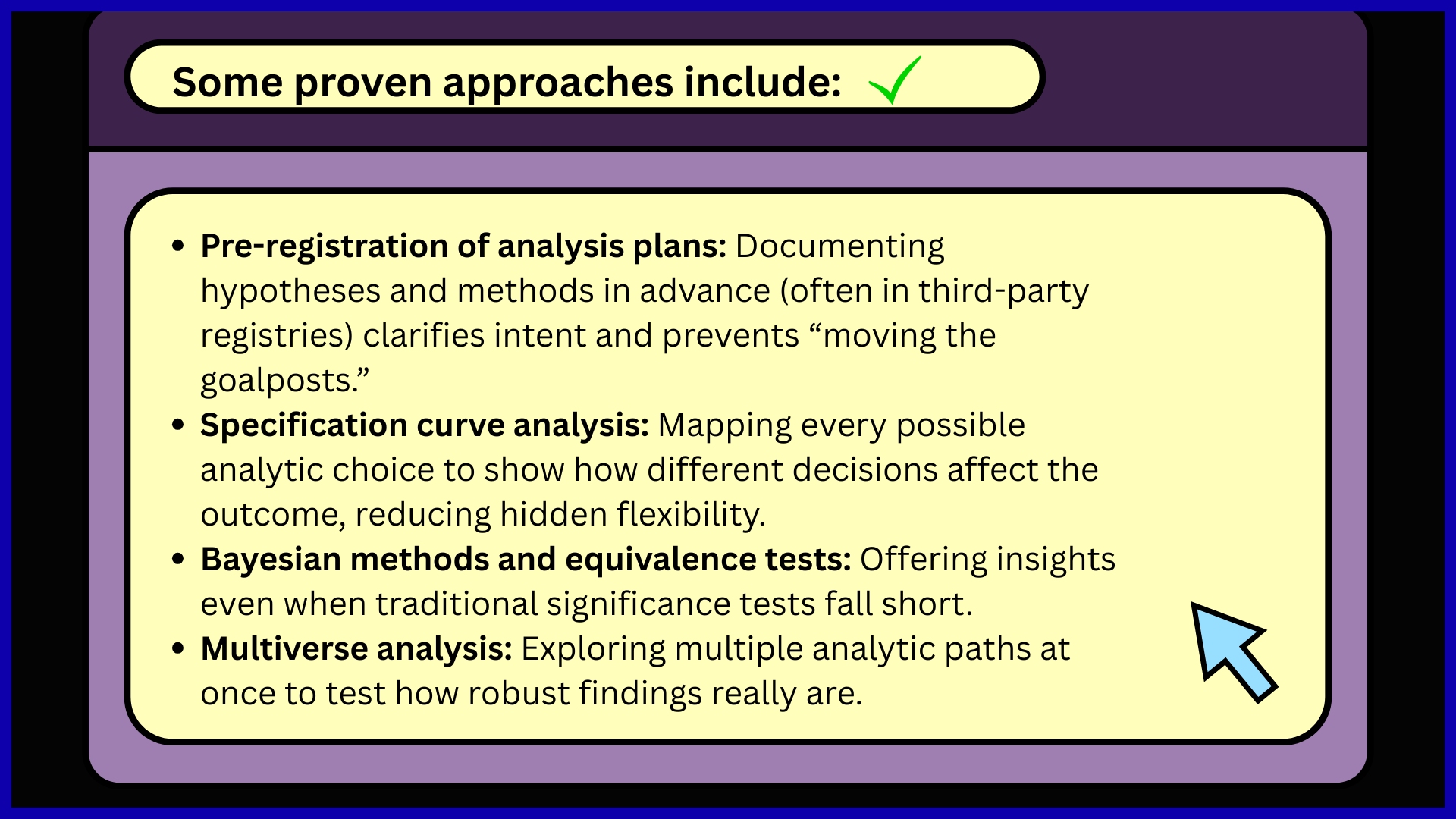
While no method can completely remove bias, these practices create transparency, reduce selective reporting, and help organizations build findings that are more trustworthy and defensible.
Bias in Reporting
Even with the best intentions, bias can sneak into reporting. It shapes what data we collect, how we analyze it, and how we present it. Understanding different kinds of bias—and knowing how to address them—is key to keeping reports fair and trustworthy.
Algorithmic Bias
Algorithms are only as good as the data and rules they’re built on. If the input is biased, the output will be too.
Example: Some hiring platforms once trained their algorithms on past résumés. Since most of those résumés came from men in tech roles, the system learned to favor male candidates over equally qualified women. Without regular audits, that bias would have gone unnoticed.
To prevent this, organizations should:
-
Audit systems frequently, not just once
-
Check input data, model logic, and outputs for fairness
-
Train employees to spot potential bias in automated systems
The goal is to design bias checks into workflows, so algorithms help rather than harm.
Cognitive Bias
Cognitive bias helps us view and share data. We’re surprisingly bad at judging charts using angles or arcs, such as pie charts, because our brains aren’t designed to compare these shapes. Instead, simple visuals, like bar charts, help make differences stark.

Example: A marketing team uses a pie chart with subtle color differences to show ad performance. Some members misread which channel performed best, leading to poor budget decisions. Switching to a bar chart with clear labels would have avoided the confusion.
To reduce cognitive bias:
-
Use simple visuals like bar charts instead of pie charts

-
Label data directly rather than relying on legends
-
Consider accessibility with high contrast and alt text
Discussing bias openly and offering training helps teams make sharper, more inclusive decisions.
Sampling Bias

Sampling bias occurs if the data isn’t representative of the entire population. Random, representative sampling helps you avoid it.
Example: A company surveys only its repeat customers about satisfaction. Naturally, most answers are positive, but they miss first-time buyers who may have had poor experiences. The final report suggests higher satisfaction than reality.
To avoid this:
-
Use random, representative samples
-
Document sampling methods for transparency
-
Include diverse communities, especially in international research
This is critical in international research, where absent perspectives distort results and misinform decision makers.
Building an Ethical Framework

A good ethical framework guides how teams manage data, report results, and make decisions. It orients behavior around truth, justice, and responsibility. Constructing a framework isn’t a once-and-done task. Social, cultural, and technological changes necessitate that it remain dynamic and represent the interests of all stakeholders.
Through the utilitarian lens, you can help make decisions that do the most good and cause the least amount of harm. Engaging diverse voices ensures your framework remains grounded and relevant, particularly as fresh challenges emerge.
Establish Policies
Clear policies give teams a roadmap for ethical reporting.
-
Define what’s allowed, what’s not, and why
-
Train all staff, not just managers
-
Provide safe channels for reporting concerns—like anonymous tips or hotlines
-
Review and update policies regularly to keep up with new standards
Good policies turn vague ideas into actionable rules that everyone can follow.
Implement Reviews
Periodic audits keep your reporting practices honest. These reviews shouldn’t be a mere formality. They have to investigate actual examples and look for patterns. Peer reviews provide an additional level of oversight.
When peers review one another’s work, errors and prejudice are more readily identified. It’s smart to get feedback from stakeholders. Clients, readers, or partners can provide an alternative perspective about what is working and what’s not.
Such feedback can illuminate blind spots or emerging risks. Any review discoveries should inform next steps. Refine policies, train staff, or alter workflows to prevent the same problems.
Foster Culture
Policies matter, but culture matters more.
-
Create space for open conversations about ethics
-
Highlight and reward ethical decisions
-
Use case studies, checklists, or expert talks to keep knowledge fresh
An ethic-first culture shows employees and stakeholders that doing the right thing is as important as achieving results.
Consequences of Unethical Reporting

The table below outlines some of the key risks tied to unethical reporting:
|
Consequence |
Explanation |
Example/Impact |
|---|---|---|
|
Legal Risks |
Unethical reporting can break laws, leading to lawsuits, fines, or even criminal charges. |
Fraud investigations, civil suits, damages up to $206 million for misleading disclosures. |
|
Reputational Damage |
Negative press spreads quickly, making it hard for organizations to regain lost credibility. |
64% of 18–24 year olds would never buy from a company accused of unethical practices. |
|
Loss of Public Trust |
Once trust is broken, it’s tough to win back, affecting brand loyalty and long-term relationships. |
Younger consumers boycott brands; public doubts company claims and data. |
|
Financial Harm |
Organizations may lose up to 5% of revenue yearly due to fraud linked with unethical reporting. |
Loss of sales, investor pull-out, drop in market value. |
For companies, this can translate into losing loyal customers and struggling to woo new talent or partnerships. Take, for instance, a large multinational firm caught dealing with exploitative suppliers. They will encounter enduring negative repercussions, particularly from highly tolerant millennials who are quick to shun and boycott. In fact, 64% of 18–24 year olds say they would never return to a brand in the wake of such a scandal, versus 40% of those 65 and older.
Conclusion
Ethical reporting belongs at the center of clever work with data. Transparent processes, truthful verification, and consideration for individuals establish enduring confidence. Ethical reporting habits prevent slip-ups, foster collaboration, and empower organizations to take just actions. By detecting slant and maintaining accuracy, squads prevent major errors and maintain transparency. Real people shape every step, and their decisions make a difference. An ethics blunder can shatter trust quickly.
To stay sharp, keep learning as a team and share what works best. Look for tools that make transparency simple—like dashboards that are easy to check and easy to share. Platforms such as KPI.me help by turning complex data into clear, accessible insights that everyone can understand. When you pair the right tools with ongoing education and open discussion, your reporting stays rock solid and your team stays ahead.
Frequently Asked Questions
What are ethical reporting practices?
Ethical reporting practices emphasize transparency, accuracy, and adherence to journalism ethics, ensuring respect for privacy and avoiding harm.
Why is the data lifecycle important for ethics?
Data lifecycle is really important because ethical risks can arise at any stage, particularly concerning ethical conduct. By handling data ethically from ingestion to deletion, you safeguard privacy and preserve confidence in the outcomes.
How can bias in data be reduced?
Bias may be mitigated through ethical journalism practices, including diverse sources, transparent methodology, and adherence to journalistic guidelines for fairness audits.
What is an ethical framework in reporting?
Ethical reporting practices are guided by journalism ethics, ensuring that decisions regarding information are made ethically and with moral clarity, considering the impacts on those affected by the data.
What are the consequences of unethical reporting?
Unethical reporting can lead to significant issues such as loss of trust, legal sanctions, and damage to individuals or groups, ultimately tarnishing a company’s public image and ethical standards.
How can organizations promote ethical reporting practices?
Organizations can encourage ethical journalism by providing employee training, establishing clear guidelines, and conducting regular audits of reporting practices to enhance transparency and accountability.

